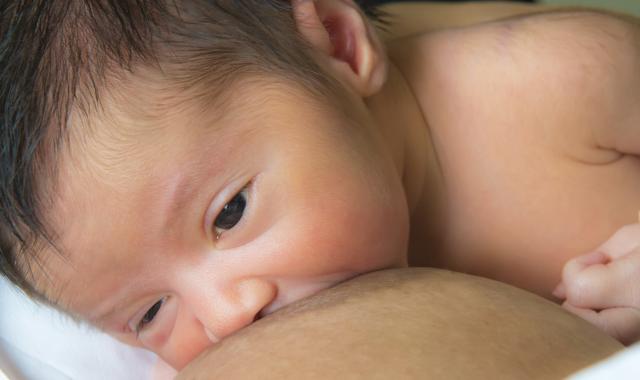Breast feeling lumpy and tender?

In a healthy milk-making breast, milk flows easily through the ducts to a number of tiny openings on the nipple. The breast feels comfortable, and the supply of breastmilk matches the needs of the baby. But sometimes these ducts and the tissue around them can become inflamed.
This is sometimes called ‘blocked ducts’, but there is no evidence to support the idea of a blockage causing these symptoms. If a localised area of your breast is inflamed, you may notice:
- A single, firm lump
- An area that is lumpy or swollen
- The skin looks red
- It feels tender
- You feel pain when your let-down reflex happens
- It doesn't soften well after a breastfeed.
This is different to engorgement.

Why is my breast inflamed?
Localised breast inflammation can happen at any time during breastfeeding but some things may make it more likely:
- Going longer between breastfeeds
- Your baby sleeps for longer or sleeps overnight
- Breastfeeds are rushed or your baby doesn't have a full feed
- Your baby is not removing milk well
- Making too much milk for your baby's needs
- Putting pressure on the breast.
Relieving an inflamed breast
Start treatment as soon as you notice any signs of inflammation in your breast. Keep the milk flowing and reduce the inflammation to stop it progressing to mastitis.
Before breastfeeding
Try these tips at the start of a breastfeed to encourage your let-down reflex and help your milk to flow:
- Apply warmth to the affected breast
- Try to relax
- Gently stroke your breast towards the nipple
- Make your breasts as comfortable as possible by taking off or loosening your bra.
When breastfeeding
- Continue to breastfeed your baby as often as they need.
- Check that they are positioned and attached well.
- Start each feed on alternate breasts.
- If your baby is not breastfeeding well, you may need to express.
After breastfeeding
-
Use cool packs to help relieve pain and inflammation
-
If your breast still feels full, hand express until it feels more comfortable.
Handle your breast gently and continue these steps until it feels better. Sometimes it can take a few days for the inflammation in your breast to reduce. It may feel slightly less sore after each feed.
Know the signs and symptoms of mastitis so you know when to seek help.
How can I prevent it from happening again?
Some mums get inflamed breasts more often than others. If you find yourself with sore, red or painful breasts again, it may help to think about how you are breastfeeding or expressing.
- Breastfeed your baby as often and for as long as they need.
- Get help with breastfeeding if your baby is not removing milk well.
- If you need to express, aim to express only as much breastmilk as your baby needs.
- Treat sore or damaged nipples.
- Make sure there is no pressure on your breasts.
- Rest when you can, eat well and drink to your thirst.
© Australian Breastfeeding Association February 2023


